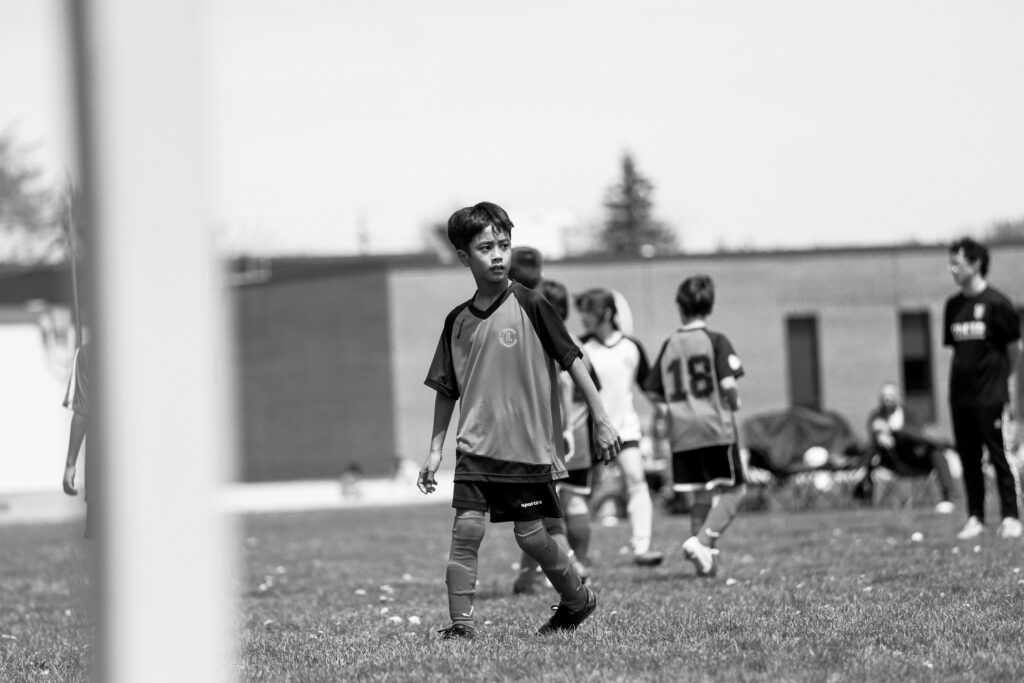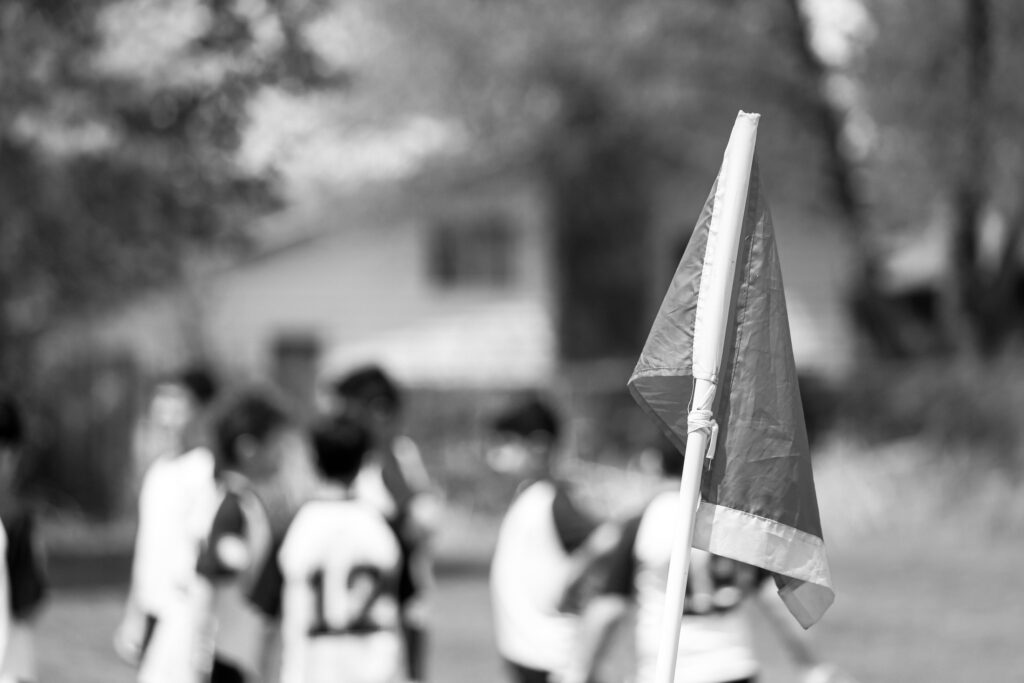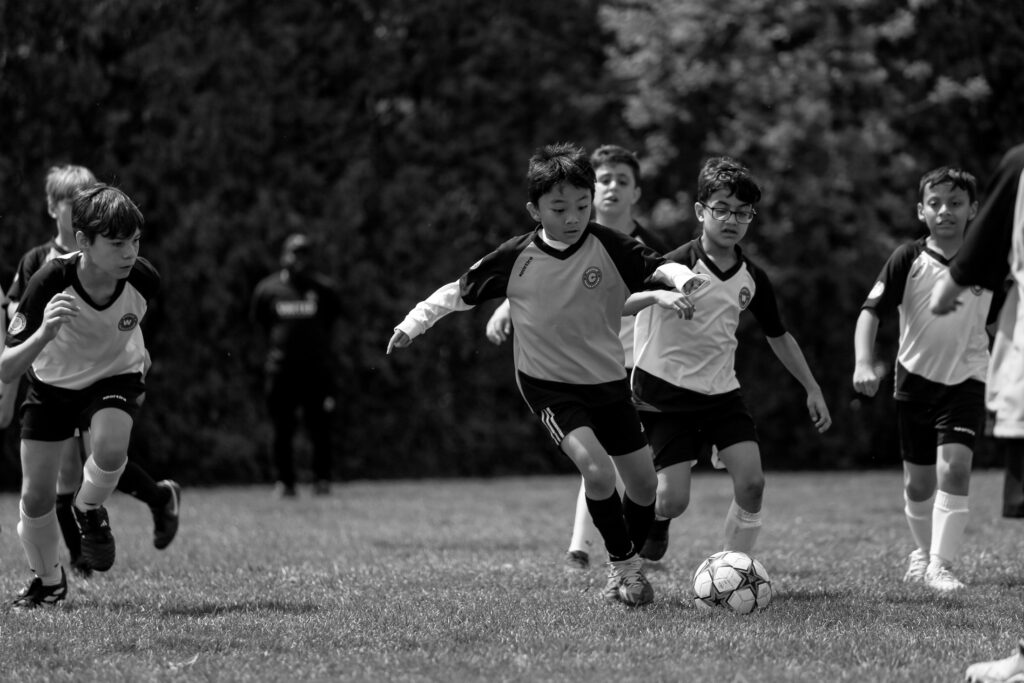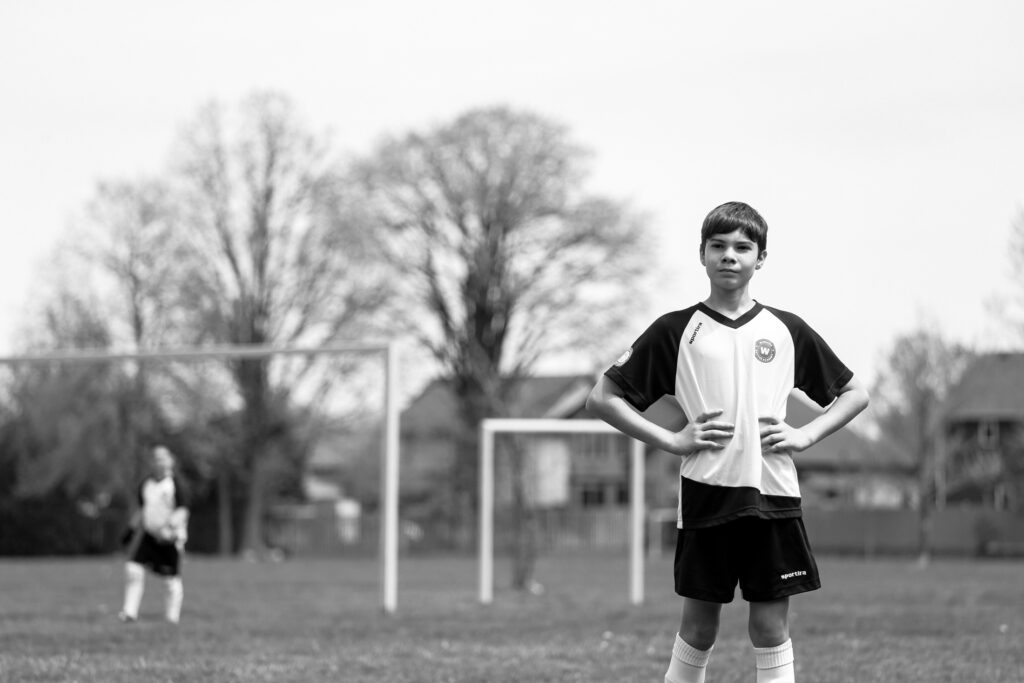Watch the video clip pay attention to how many times the players kick the ball away without making an attempt to control the ball, how many passes are made and how may dribbles are attempted.

How many times did a player kick the ball away without
making an attempt to control the ball?
We are not sure of the exact number! But we can agree that the majority of the times that the ball came towards any player they simply kicked away with very little intention or thought. In most of the cases when the player kicked the ball away it went to the opposing team. There was little to no possession of the ball by either team.

How many times did a player attempt
to dribble the ball or make a pass?
There were a couple of attempts to dribble and a couple of passes that luckily ended up going to a team mate but overall not enough players tried to do anything other than kick the ball away. If players are not trying to receive the ball, dribble the ball or make a pass to a team mate then this is the type of soccer we can expect to see.
Why player kick the ball away

Fear of making mistakes:
Young players may be afraid of making errors due to the pressure of performing well and pleasing their coaches, parents, or peers. This fear can lead them to choose the safest option of kicking the ball away to avoid the possibility of losing possession, making a bad pass, or being directly responsible for conceding a goal.

Limited decision-making ability:
Young players are still developing their cognitive abilities, which directly impact their ability to make quick and informed decisions on the field. This limitation can make it challenging for them to analyze the game situation, weigh their options, and make the best decision on what to do with the ball, causing them to opt for the simple choice of kicking it away.
Lack of technical skills
Inexperienced players with low technical ability may struggle with essential soccer skills, such as ball control, dribbling, and passing. Without these foundational skills, they might find it difficult to maintain possession or execute precise passes, leading them to instinctively kick the ball away as a default reaction.

Pressure from opponents:
When faced with an aggressive or skillful opponent, a young and inexperienced player might feel overwhelmed or intimidated. This pressure can make it difficult for them to think clearly or execute their skills, leading them to choose the safer option of kicking the ball away to avoid losing possession or being tackled.

Misunderstanding of objectives:
Inexperienced players may not fully grasp the importance of ball possession, passing, and teamwork in soccer. They might not understand the necessity of maintaining possession and advancing strategically, leading them to prioritize getting the ball away from their goal rather than trying to control the ball and make thoughtful decisions. This lack of understanding can reinforce the habit of kicking the ball away as a default tactic.
Coaches playing a kick and chase style of soccer
If coaches encourage or teach their players to adopt a kick and chase style, young players may internalize this approach as the proper way to play. This could lead to them consistently kicking the ball away and not focusing on developing their technical skills or decision-making abilities.

Lack of confidence:
A player with low self-confidence might not trust their own abilities and may doubt their capacity to execute skillful moves or make smart decisions on the field. This lack of self-assurance can lead them to kick the ball away, believing it is the safest option, rather than attempting a more skillful or strategic play.

Fear of physical contact:
Some young players may be apprehensive about engaging in physical contact with other players, particularly if they are smaller, less experienced, or less physically developed than their peers. This fear can cause them to kick the ball away to avoid potential collisions, injuries, or confrontations on the field.
Parents on the sidelines yelling at players to get rid of the ball all the time
Overzealous or vocal parents on the sidelines can create added pressure on young players to follow their instructions. When parents consistently yell at players to get rid of the ball, it may lead to players adopting this tactic as the best course of action during games, rather than focusing on ball control and making thoughtful decisions on the field.

Imitation of peers:
Young players often look to their teammates for cues on how to behave and perform on the field. If they observe their peers consistently kicking the ball away, they might follow suit, believing that this is the appropriate way to play and inadvertently adopting an overly conservative style.

Inadequate coaching:
If players have not received proper coaching on essential soccer concepts like ball control, decision-making, and game awareness, they may lack the necessary foundation to make informed decisions during gameplay. As a result, they may resort to kicking the ball away as a default option, as they are unsure of how to respond to various game situations.